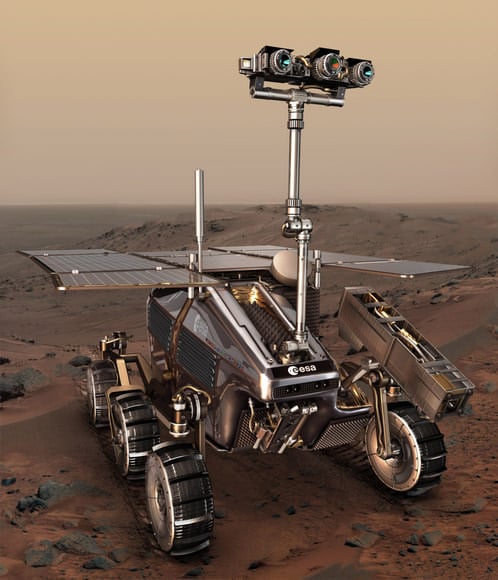[/caption]
Making good on its promise to work together with other space agencies, NASA has selected two science instruments that will fly on board European Space Agency (ESA) spacecraft, one heading to Mars on the ExoMars rover, the other to Mercury with the BepiColombo orbiter. "The selections will further advance our knowledge of these exciting terrestrial planets," said Jim Green, director of NASA's Planetary Division at NASA Headquarters in Washington. "The international collaboration will create a new chapter in planetary science and provide a strong partnership with the international science community to complement future robotic and human exploration activities."
The Lander Radio-Science on ExoMars, or LaRa, will use NASA's Deep Space Network of radio telescopes to track part of ESA's ExoMars mission. Scheduled to launch in 2016, the mission consists of a fixed lander and a rover that will roam Mars collecting soil samples for detailed analysis.
Data relayed from the lander back to the network will allow scientists to measure and analyze variations in the length of the day and location of the planet's rotational axis. This data will help researchers further dissect the structure of the Red Planet's interior, including the size of its core. When combined with the lander's onboard instruments, the data also may help confirm whether the planet's interior is still, at least partially, composed of liquid. William Folkner of NASA's Jet Propulsion Laboratory in Pasadena, Calif., is the principal investigator. The project costs approximately $6.6 million. [caption id="attachment_30331" align="aligncenter" width="580" caption="BepiColombo - Mission to Mercury. Credit: ESA Click for larger version."]
[/caption] The second science instrument selection, named Strofio, will employ a unique mass spectrometer on board the BepiColombo mission. The instrument will determine the mass of atoms and molecules to reveal the composition of Mercury's atmosphere. The investigation will study the atmosphere, which is formed from material ejected from its surface, to reveal the composition of Mercury's surface.
Strofio will be a component of the Italian Space Agency's suite of science instruments that will fly aboard BepiColombo . Scheduled for launch in 2013, the mission is composed of two spacecraft. Japan will build one spacecraft to study the planet's magnetic field. ESA will build the other to study Mercury directly. Stefano Livi of the Southwest Research Institute in San Antonio is the principal investigator. The project costs approximately $31.8 million.
The selections were chosen from eight proposals submitted in December 2008 in response to NASA's new Stand Alone Mission of Opportunity, known as Salmon. NASA solicited proposals for investigations that address planetary science research objectives on non-agency missions. A key criterion is that science goals, including data archiving and analysis, must be accomplished for less than $35 million.
Source:
NASA
 Universe Today
Universe Today
